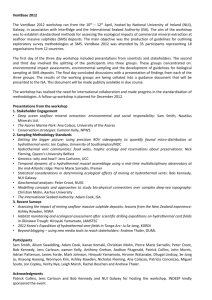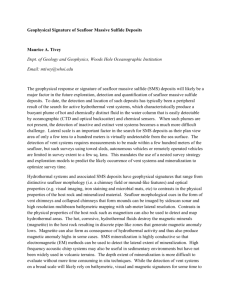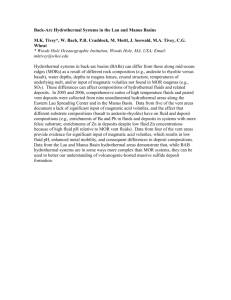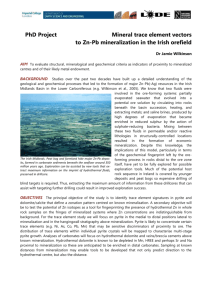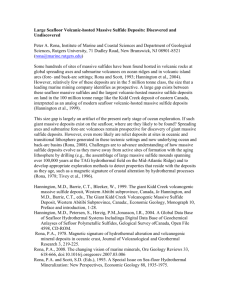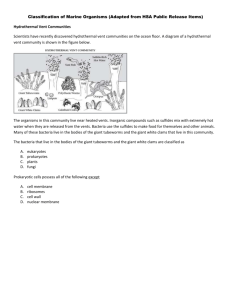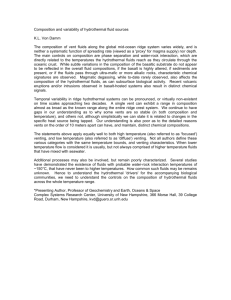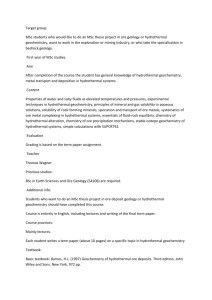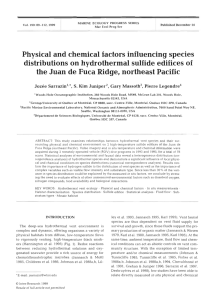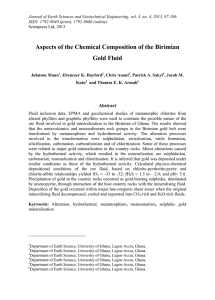GEOLOGIC, PETROLOGIC AND GEOCHEMICAL
advertisement
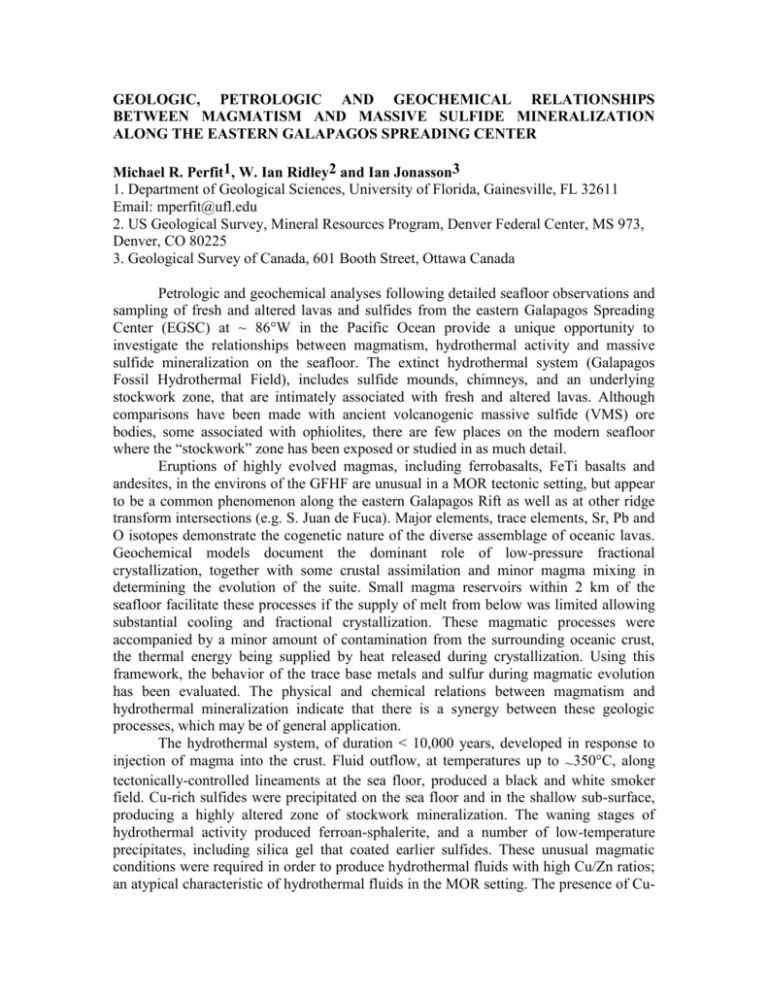
GEOLOGIC, PETROLOGIC AND GEOCHEMICAL RELATIONSHIPS BETWEEN MAGMATISM AND MASSIVE SULFIDE MINERALIZATION ALONG THE EASTERN GALAPAGOS SPREADING CENTER Michael R. Perfit1, W. Ian Ridley2 and Ian Jonasson3 1. Department of Geological Sciences, University of Florida, Gainesville, FL 32611 Email: mperfit@ufl.edu 2. US Geological Survey, Mineral Resources Program, Denver Federal Center, MS 973, Denver, CO 80225 3. Geological Survey of Canada, 601 Booth Street, Ottawa Canada Petrologic and geochemical analyses following detailed seafloor observations and sampling of fresh and altered lavas and sulfides from the eastern Galapagos Spreading Center (EGSC) at ~ 86°W in the Pacific Ocean provide a unique opportunity to investigate the relationships between magmatism, hydrothermal activity and massive sulfide mineralization on the seafloor. The extinct hydrothermal system (Galapagos Fossil Hydrothermal Field), includes sulfide mounds, chimneys, and an underlying stockwork zone, that are intimately associated with fresh and altered lavas. Although comparisons have been made with ancient volcanogenic massive sulfide (VMS) ore bodies, some associated with ophiolites, there are few places on the modern seafloor where the “stockwork” zone has been exposed or studied in as much detail. Eruptions of highly evolved magmas, including ferrobasalts, FeTi basalts and andesites, in the environs of the GFHF are unusual in a MOR tectonic setting, but appear to be a common phenomenon along the eastern Galapagos Rift as well as at other ridge transform intersections (e.g. S. Juan de Fuca). Major elements, trace elements, Sr, Pb and O isotopes demonstrate the cogenetic nature of the diverse assemblage of oceanic lavas. Geochemical models document the dominant role of low-pressure fractional crystallization, together with some crustal assimilation and minor magma mixing in determining the evolution of the suite. Small magma reservoirs within 2 km of the seafloor facilitate these processes if the supply of melt from below was limited allowing substantial cooling and fractional crystallization. These magmatic processes were accompanied by a minor amount of contamination from the surrounding oceanic crust, the thermal energy being supplied by heat released during crystallization. Using this framework, the behavior of the trace base metals and sulfur during magmatic evolution has been evaluated. The physical and chemical relations between magmatism and hydrothermal mineralization indicate that there is a synergy between these geologic processes, which may be of general application. The hydrothermal system, of duration < 10,000 years, developed in response to injection of magma into the crust. Fluid outflow, at temperatures up to ~350°C, along tectonically-controlled lineaments at the sea floor, produced a black and white smoker field. Cu-rich sulfides were precipitated on the sea floor and in the shallow sub-surface, producing a highly altered zone of stockwork mineralization. The waning stages of hydrothermal activity produced ferroan-sphalerite, and a number of low-temperature precipitates, including silica gel that coated earlier sulfides. These unusual magmatic conditions were required in order to produce hydrothermal fluids with high Cu/Zn ratios; an atypical characteristic of hydrothermal fluids in the MOR setting. The presence of Cu- rich magmatic sulfides within the crust is the only reasonable source of additional Cu to hydrothermal fluids, and such accumulations require extensive fractional crystallization. The unusual bulk composition of the crust, being dominated by FeO-rich volcanics, buffered fluids to very low oxygen fugacities. These fluids possessed a high oxygenbuffering capacity during mixing with seawater, and the sulfide trace element geochemistry is consequently unusual. Highly evolved volcanics are not unique to the GFHF and its local environs, because volcanics with closely similar geochemical characteristics have been observed and collected elsewhere along the Galapagos Rift, Juan de Fuca and EPR ridges. The inter-relations between local, specialized magmatism, tectonism, and fluid flow, which resulted in exhalative mineralization, are likely to be repeated elsewhere along the MOR system and in some back-arcs. Thus, the presence of other sulfide fields similar to the GFHF is predicted.
